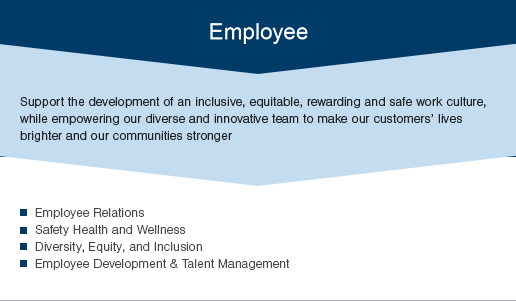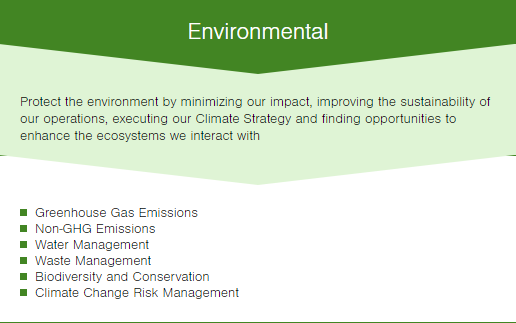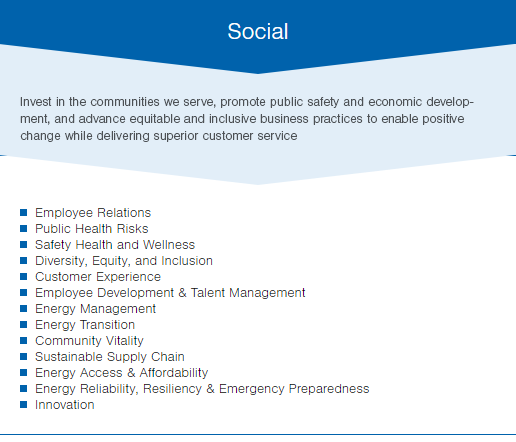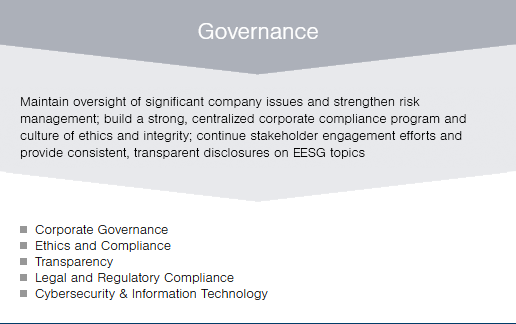UNDERSTANDING CORPORATE RESPONSIBILITY MATERIALITY
Corporate Responsibility materiality assessments are a mechanism designed to help companies identify and understand the relative importance of employee, environmental, social and governance topics.
Insights gained from these assessments enable companies to appropriately prioritize these topics, manage relevant performance improvement and integrate goals into business strategy. Companies can also gain line of sight into emerging topics that may impact their business to help them manage related risks. Additionally, companies may use materiality assessment results to evaluate how well they are communicating with stakeholders about these topics through their corporate responsibility reporting and disclosures.
CORPORATE RESPONSIBILITY MATERIALITY ASSESSMENT
Our Corporate Responsibility materiality assessment performance depends largely on our ability to effectively identify, manage and communicate the risks and opportunities of relevant employee, environmental, social and governance topics to our internal and external stakeholders. We designed our Corporate Responsibility website to be a central and accessible location for disclosures on these topics that influence our company.
Strong management and oversight of relevant topics, together with transparency and accountability regarding areas for improvement, help drive us forward as a company.
The purpose and value of our materiality review include:
- Validating that we are appropriately addressing the most relevant responsible business topics for our company.
- Prioritizing these topics so that we can develop initiatives designed to improve our rating performance, enhance our disclosures, and mitigate risks related to these topics.
- Identifying emerging topics in our industry.
Methodology
We routinely assess our Corporate Responsibility materiality using Datamaran®, a cloud-based software platform that enables a comprehensive and data-driven process.
Datamaran® assesses the topics that are most relevant to the electric utility industry as informed by SASB's Sustainable Industry Classification System® (SICS)*. Using their patented machine learning technology, Datamaran® analyzed our Corporate Responsibility website to determine how effective we are in communicating employee, environmental, social and governance topics. The same technology is used to track the frequency and emphasis of those same topics within our stakeholders publicly available sources including – corporate annual reports, data reports, industry regulation and digital media. The stakeholder groups included electric utility peers, regulators, policy makers, investors, customers and suppliers. The output was a robust, AI data-driven ranking of topics as described by these external stakeholders in their disclosures.
The results affirm that our company's mission, core values and company goals align with the topics most relevant for our stakeholders.
While it is important to understand and act on these topics material to our business, the ability to effectively communicate the importance of these topics to external stakeholders can be equally important.
Datamaran's AI technology helped us determine that we are meeting stakeholder expectations though our external communications on our Corporate Responsibility website. The results demonstrate that a majority of our relevant topics are communicated effectively and are aligned with external stakeholders' expectations for these disclosures.
We recognize that these topics are continually evolving and will continue to use data analysis to evaluate emerging topics and focus our efforts on those topics most important to FirstEnergy and our stakeholders.
Relevant Corporate Responsibility Topics
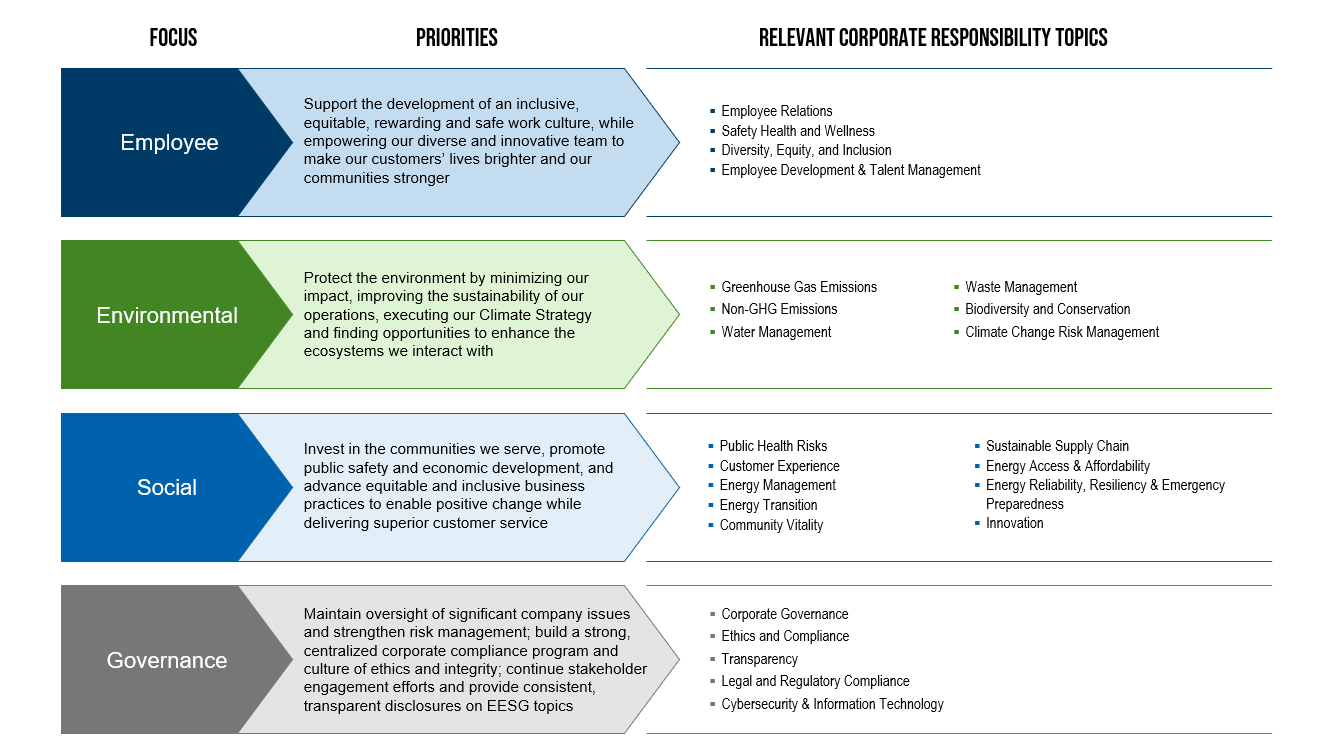
*SASB's Sustainable Industry Classification System® (SICS®) uses an impact-focused methodology categorizing companies under a sustainability lens. SICS builds on and complements traditional classification systems by grouping companies into sectors and industries in accordance with a fundamental view of their business model, their resource intensity and sustainability impacts, and their sustainability innovation potential.
